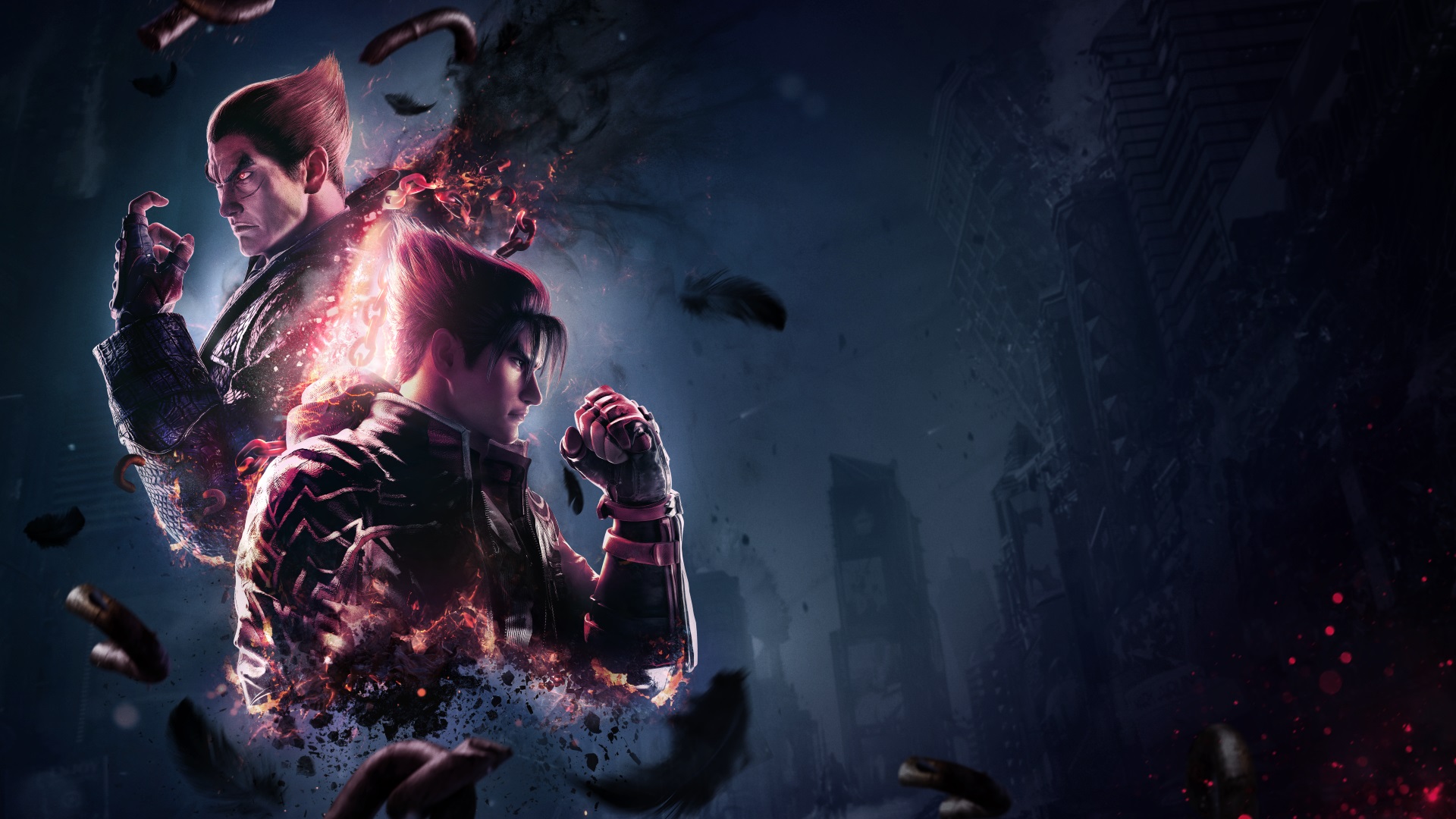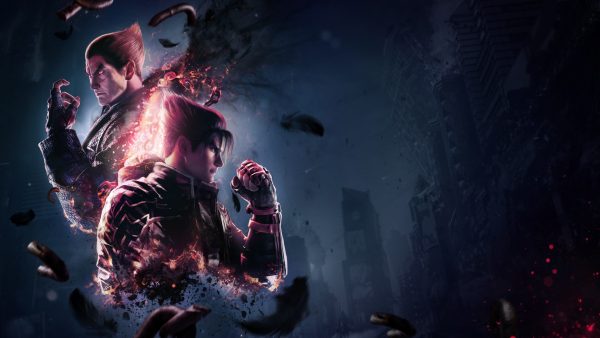For this next edition, we’ll be sticking with notation still. There are a few concepts remaining that we need to tackle before getting into gameplay theory and how to actually fight another human player, so bear with us for a while. And if you haven’t, please do check out the first part; you’ll need it for the road ahead.
The Absolute State
In Tekken 8, there are state-based actions. What we mean by this is that a character must be in specific states, such as standing or crouching, or sidestepping as we covered in the previous guide. In essence, these actions or moves are locked behind these states, and can only be accessed when certain conditions are met.
Foremost among these states is the while standing state — the verbiage of which tends to confuse new players out of the gate. The term while standing actually refers to the act of standing up from a crouching state — not standing in a neutral position as a character normally does. So in other words, you must be coming out of a crouch in order to use your while standing moves.
Furthermore, the state itself is actually called “while rising” in the in-game move list, adding even more confusion to the mix. But as far as the universal notation system is concerned, we call it while standing in order to write it as WS and not WR, the latter of which would create a direct conflict between while rising and while running. More on that last one later.
So, for example, Kazuya’s Demon God Fist would read as WS2 or WS 2. This is read aloud simply as “while standing two”. To execute, you must let go of the d-pad or joystick from a crouching position (down, down-forward, or down-back) so that it goes into neutral, then input a basic attack in the time that your character is standing up from their crouch.
The reason while standing moves are so important is because they are a character’s primary punishment option for blocking low attacks. Since low attacks must be blocked while crouching, characters will automatically have to use their while standing moves to get a punish in. There is a way to get around this — but it is far beyond the scope of this guide and the Beginner Series as a whole, so we’ll leave that for the future.
Anyway, we mentioned while running earlier, which is exactly what it says on the tin: a move that can only be done while your character is running across the screen. Dragunov’s Russian Assault, or his WR2, is perhaps the most infamous example of such a move. The actual input for this move is f, f, F+2; yes, that’s three forward inputs one after the other, with the final one being held down as you press right punch.
A lot of while running moves are heavily advantageous when blocked, making them key for applying pressure. But again, this concept isn’t covered by this guide, so just keep that in mind for now.
Another important state is back turned, or BT in notation. This is when you character’s back is turned relative to the opponent; that is to say their back is facing the other character. Like with WR or WS, there are moves that are locked behind this state, with Xiaoyu’s California Roll (BT f+3+4) perhaps being the most popular example.
Finally, there’s full crouch, or FC in notation. When a move is locked behind full crouch, it means that your character must crouch for a minimum amount of time before getting access to the move in question. Shaheen’s Sandstorm, executed with the input FC d/f, d, D/F+4, is a good example of this.
The time needed to be considered in full crouch is exactly 11 frames, or just over one-sixth of a second. Down, down-back, and down-forward are all valid inputs to get into full crouch Some characters like Shaheen rely heavily on being unpredictable with full crouch moves, so if you play such a character, you’ll want to practice the FC timing to get a feel for how long you need to keep holding down.
Do the Stance Dance
Another area where Tekken 8 sets itself apart from other fighting games is in its characters’ stances. Almost every character in the game has one, and sometimes may only access certain moves once in those stances. For example, Hwoarang’s Misdemeanor can only be accessed when he is in Right Foot Forward stance, or RFF in notation. So the full input for Backlash is written as RFF b+4.
Most if not all stances will be abbreviated down to three characters in notation. Xiaoyu’s Art of Phoenix stance is written as AOP, Jin’s Zenshin stance is written as ZEN, Steve’s Flicker Stance is written as FLK, and so on. You’ll want to get familiar with your specific character’s stances and their abbreviations as such, so you’ll immediately recognize what stance someone is referring to.
Into the Obscure
We’ll be rounding out this guide with some of the more obscure bits in the notation system. Most of these you won’t find these very often, but it’s good to know that they’re there and what they stand for regardless. Some characters’ key moves might also use these notations, so be on the lookout in case you choose to play as a character that uses such moves.
Piano Input (a.k.a. “plinking”)
Some moves like Devil Jin’s Wheel of Pain require what is called a “piano” input, which is to say that two separate buttons must be pressed within very quick succession of each other. The name comes from the fact that, whether on a controller or an arcade stick, you must press the buttons as you would the keys of a piano — assuming you need to play two distinct notes one after another in a split second.
This is notated with a tilde, or ~, in between each button in the move itself. Devil Jin’s Wheel of Pain, therefore, comes out as 4~3. Some moves even require piano inputs during stances, such as in the case of Hwoarang’s Backlash — which comes out as RFF 3~4.
Piano inputs are also known as “plinking”, for those that are familiar with the term from Street Fighter IV. Plinking in Tekken 8, however, doesn’t involve any sort of button priority system like it did in SFIV, so it is simply used to refer to the act of pressing two different buttons quickly in this context.
Just Frame Input
The big daddy of execution barriers, the just frame input requires that two separate parts of a single input be pressed simultaneously, on the exact same frame. The most famous example of this is the Mishima family’s Electric Wind God Fist (EWGF), a greatly enhanced version of the Wind God Fist that deals more damage and pushes the opponent back further on block.
The regular Wind God Fist has an input of f, n, d, d/f+2 — or cd+2 for short. The Electric Wind God Fist, though, is technically written as f, n, d, d/f:2 — with the colon representing a just frame input. This notation means that down-forward and right punch must be pressed on the same frame; otherwise a regular Wind God Fist will come out.
It can take months or even years of practice to get this down, whether we’re talking about the EWGF or other moves that require this kind of strict timing to pull off. If you’re thinking of picking up a Mishima character like Kazuya or Devil Jin, be prepared to spend hours in practice mode trying to get EWGFs out consistently.
Counter Hit
Finally, we have counter hit, or CH in notation. A counter hit occurs when a character gets hit by a move while starting up one of their own moves. Generally speaking, the counter hit version of a move deals more damage than the regular version, making aggressive play based on “stuffing” your opponent’s moves before they come out quite rewarding.
Some moves though obtain some very strong properties on counter hit. Steve’s Quick Hook (b+1) turns into a full on launcher on counter hit, becoming one of his deadliest attacks as a result. The same goes for Kazuya’s Abolishing Fist (d/f+2), which turns into a devastating launcher if you have the execution to pull off the follow-up combo.
Summary
In summary, these are the pieces of notation that we’ve learned through the first two parts of our Tekken 8 Beginner Series:
Directional
- Forward: f
- Back: b
- Up: u
- Down: d
- Neutral: n
- Up-forward: u/f
- Up-back: u/b
- Down-forward: d/f
- Down-back: d/b
* Capitalized directional inputs denote that they must be held.
Complex Directional
- Quarter circle forward: qcf (d, d/f, f)
- Quarter circle back: qcb (d, d/b, b)
- Half circle forward: hcf (b, d/b, d, d/f, f)
- Half circle back: hcb (f, d/f, d, d/b, b)
- Crouch dash: cd (f, n, d, d/f)
Basic Attacks
- Left punch: 1
- Right punch: 2
- Left kick: 3
- Right kick: 4
Modifiers:
- Press in sequence: , (comma)
- Press simultaneously: + (plus sign)
- Just frame input: : (colon)
- Piano input/plinking: ~ (tilde)
3D Movement
- Sidestep: SS (u or d)
- Sidestep left: SSL
- Sidestep right: SSR
- Sidewalk: SW
- Sidewalk left: SWL (u, U or d, D depending on where your character is facing)
- Sidewalk right: SWR (u, U or d, D depending on where your character is facing)
States and State-Based Actions:
- While standing (“while rising” in move list): WS
- While running: WR
- Back turned: BT
- Full crouch: FC
- Counter hit: CH
- Stance (examples): AOP, FLK, ZEN, RFF, etc.
And there you have it: (almost) every bit of notation you will encounter as you go through the process of learning how to play Tekken 8. There are others still that we’ll introduce as we get into the basic gameplay concepts, so be on the lookout for those. But for now, these are the ones you need to know and memorize before we teach you how to actually play the game against another human opponent.
We’re not even close to done yet with these tutorials, so stick around for the next chapter!


